SelfCare System (Merchant Portal) Introduction
The SelfCare System is an online merchant portal. Merchants can use the portal to securely process and control transactions, set up subscriptions, send invoices, etc. as well as customize their Hosted Payment Pages or create or change their Shared Secret. It is also a powerful reporting tool and can be used for a vast number of reporting needs: from finding a single transaction to exporting a large data file based on customized criteria.
Accessing the System
Logging In
On the Login page, enter your Credentials (Merchant ID, Username and Password), then click on the “Login” button. If you do not have the SelfCare System's URL or your Credentials, please contact us by email (support@integratedcommerce.io) or telephone (866-870-6927) from Monday to Friday between 9am-5pm Eastern Time.

After a successful login, you will have access to the SelfCare System (Merchant Portal).
If the wrong credentials are entered, the system will display a corresponding message along with the count of allowed attempts.
If you do not remember your password, use the 'Forgot Password' link.
Logging Out
Once logged in, you can be logged out by two mechanisms:
Session Timeout
The portal has a timeout setting applied to all of its users, once logged in. This timeout is used to “expire” your user's session and log it out, if after the defined time, your user didn't perform any action on the portal. This avoids resource allocation for users which are not active in the system.
Manual Logout
Click on a “Logout” link. These links are available at the top right side of the portal, when clicking on your user name, and at the end of the left vertical menu.
Terminal Selector
In the top left corner of the portal is a drop down menu. If the user has access to more than one terminal, this menu allows a user to choose different terminals to operate.
Each terminal is represented by its terminal number and currency.
Dashboard
The Dashboard menu allows users to visualize their payments' statistics in a very user-friendly way. It is comprised of 4 panes, each of which has a defined presentation type and purpose, but each can be customized to display information about specific types of transactions, etc. To customize the data being visualized on each pane, click the spanner icon in the top right of the pane.
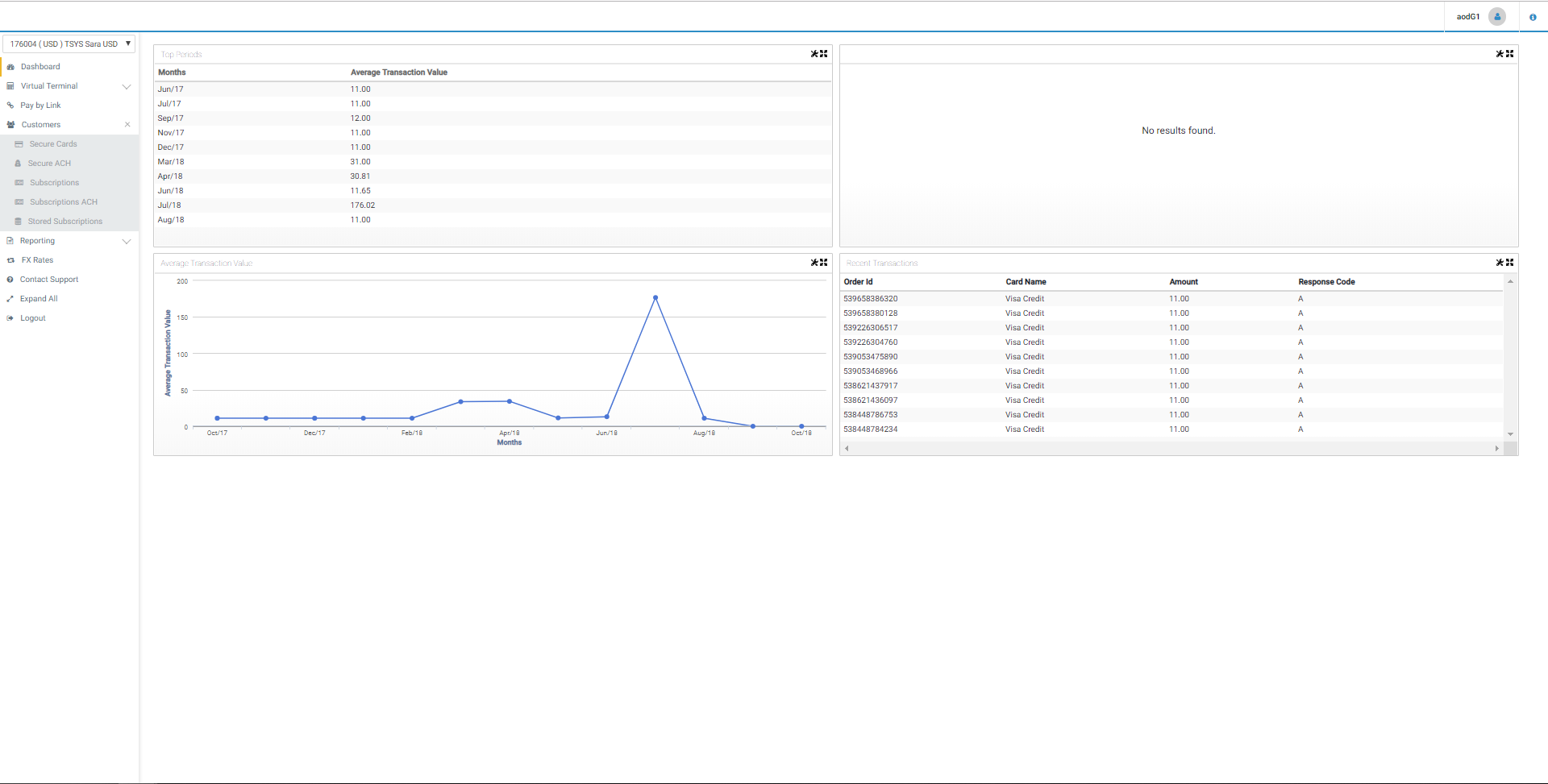
The four panes are:
- Top Periods – this displays your top periods (months, weeks, days or even hours). You can choose between the same three metrics as the graph pane and you can also filter by status.
- The Pie Chart – the pie chart is used to visualize your card type distribution, operator throughput or transaction results. It can be filtered by transaction status also, and can be limited to defined date ranges.
- Average Transaction – this pane displays ATV, Transaction Count or Total Transaction Value in a timeline. The date ranges, card types, operator and many different transaction types can be filtered.
- Recent Transactions – this pane shows live details about transactions as they are processed. It polls our server every few seconds and so there's no need to refresh the page, the transactions will simply appear here. The columns can be customized to display different fields of the transactions.
Virtual Terminal
The Virtual Terminal provides merchants with the ability to execute manual card transactions. This is especially useful in a MOTO (Mail Order/Telephone Order) environment. The Virtual Terminal is accessible directly from the main menu.
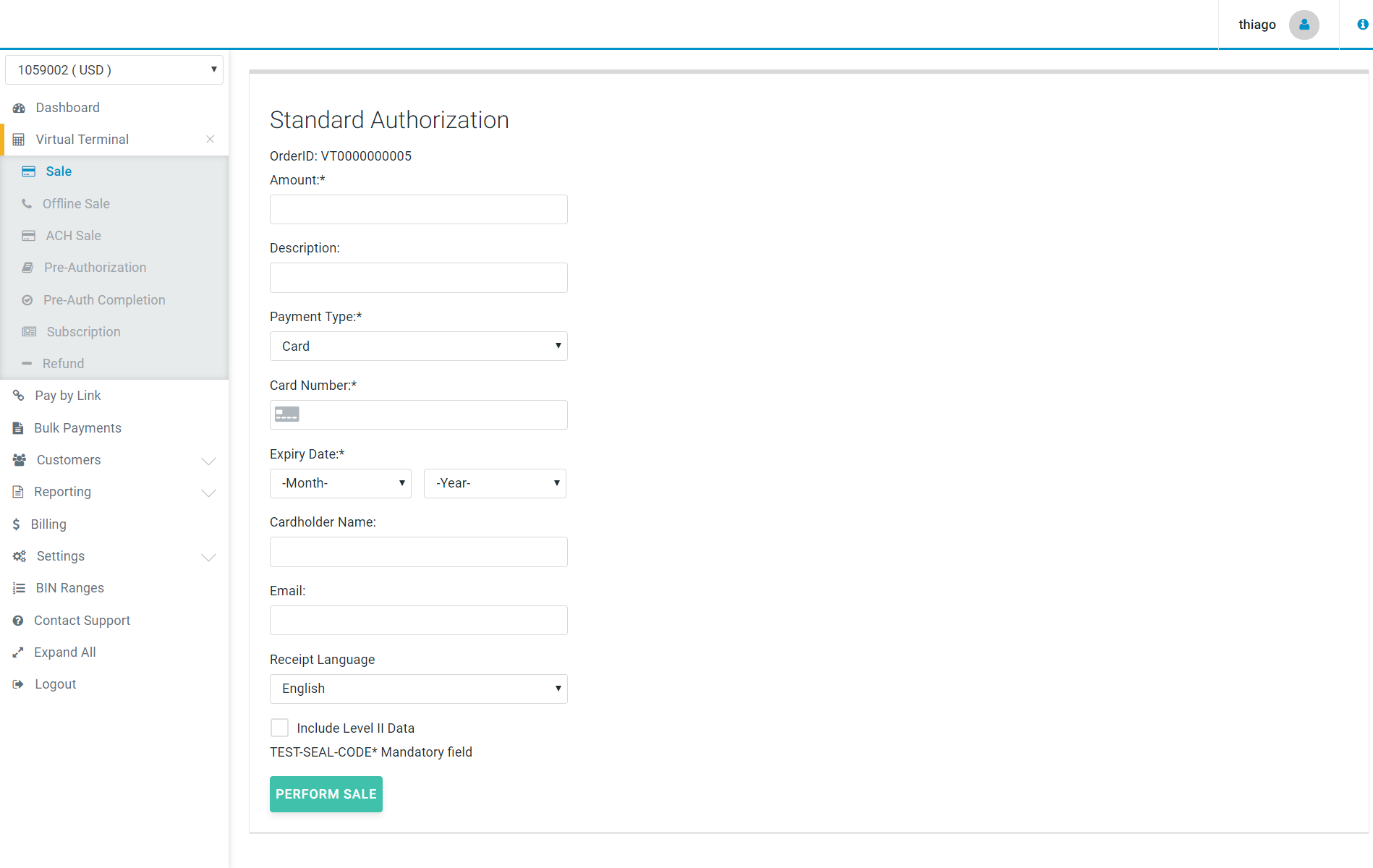
Based on your merchant account and user permissions, you will have access to the following forms:
- Sale - standard sale authorization form.
- Pre-Authorization - standard pre-authorization form.
- Pre-Auth Completion - the form to complete an existing pre-authorization.
- Subscription - the form for manual subscription processing.
- Refund - the form to process a refund if you know a transaction's Order ID.
eInvoice
The Invoice Payment Request tab in the SelfCare System presents the eInvoice feature, designed to allow merchants to create and send links to their customers which allows those customers to perform payments using a Hosted Payment Page (HPP).
For more information on the Invoice Payment Request, refer to the eInvoice section.Bulk Payments
The Bulk Payments tab in the SelfCare System allows merchants to upload CSV files of payments.
For more information on Bulk Payments, refer to the Bulk Payments section.Customers
The Customers tab in the SelfCare System contains “Secure Cards”, “Subscriptions” and “Stored Subscriptions” sections in the drop down menu.
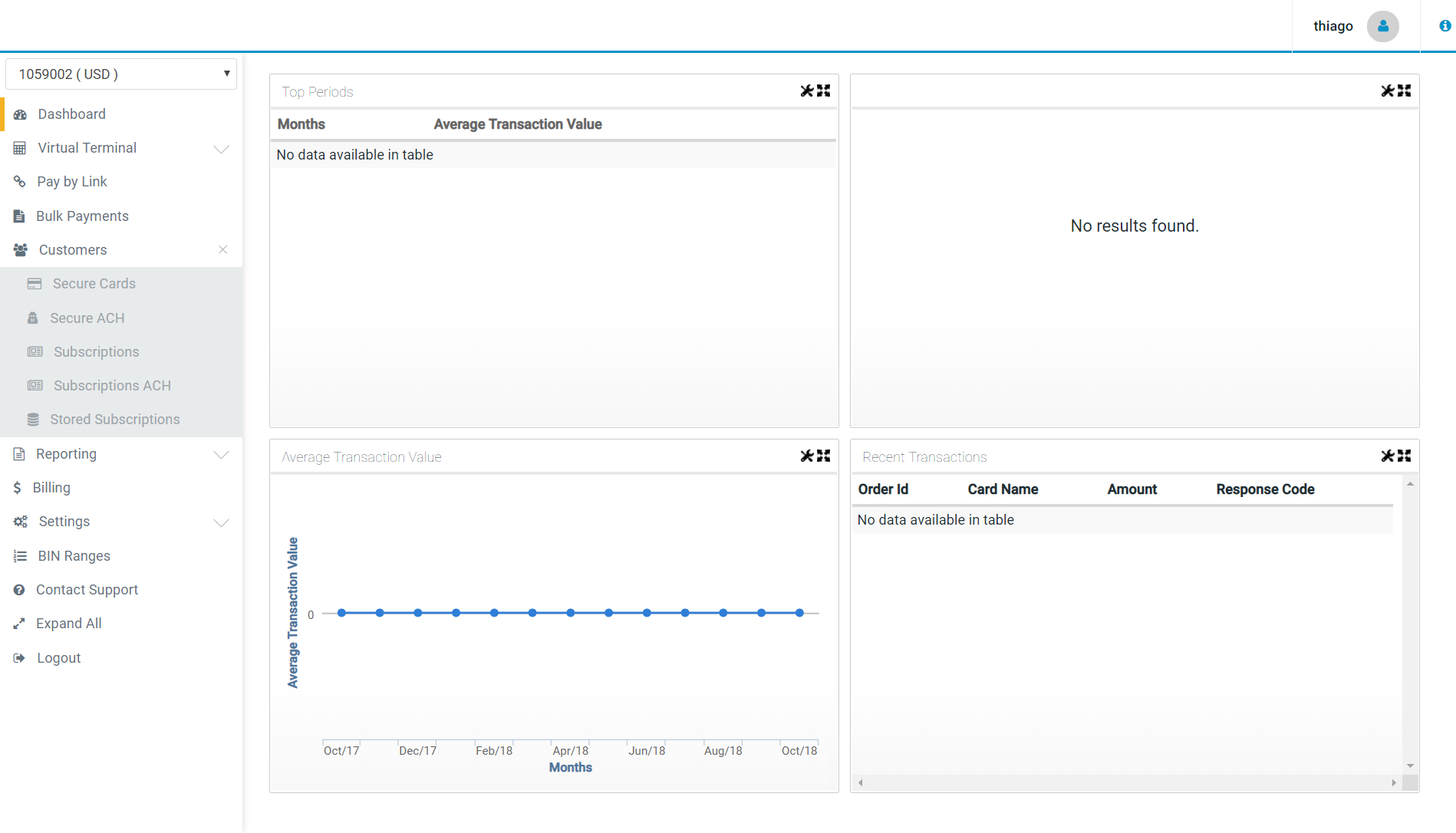
Secure Cards (Tokens)
Secure Card (Token) Storage is useful for merchants who are required to perform regular payments without the card holder entering their information. The Secure Card facility enables merchants to enter the payment card details and store them in a secure way, in order to use it in the future for recurring payments. Secure Card Registration is necessary to be able to set up a Subscription for regular payments.
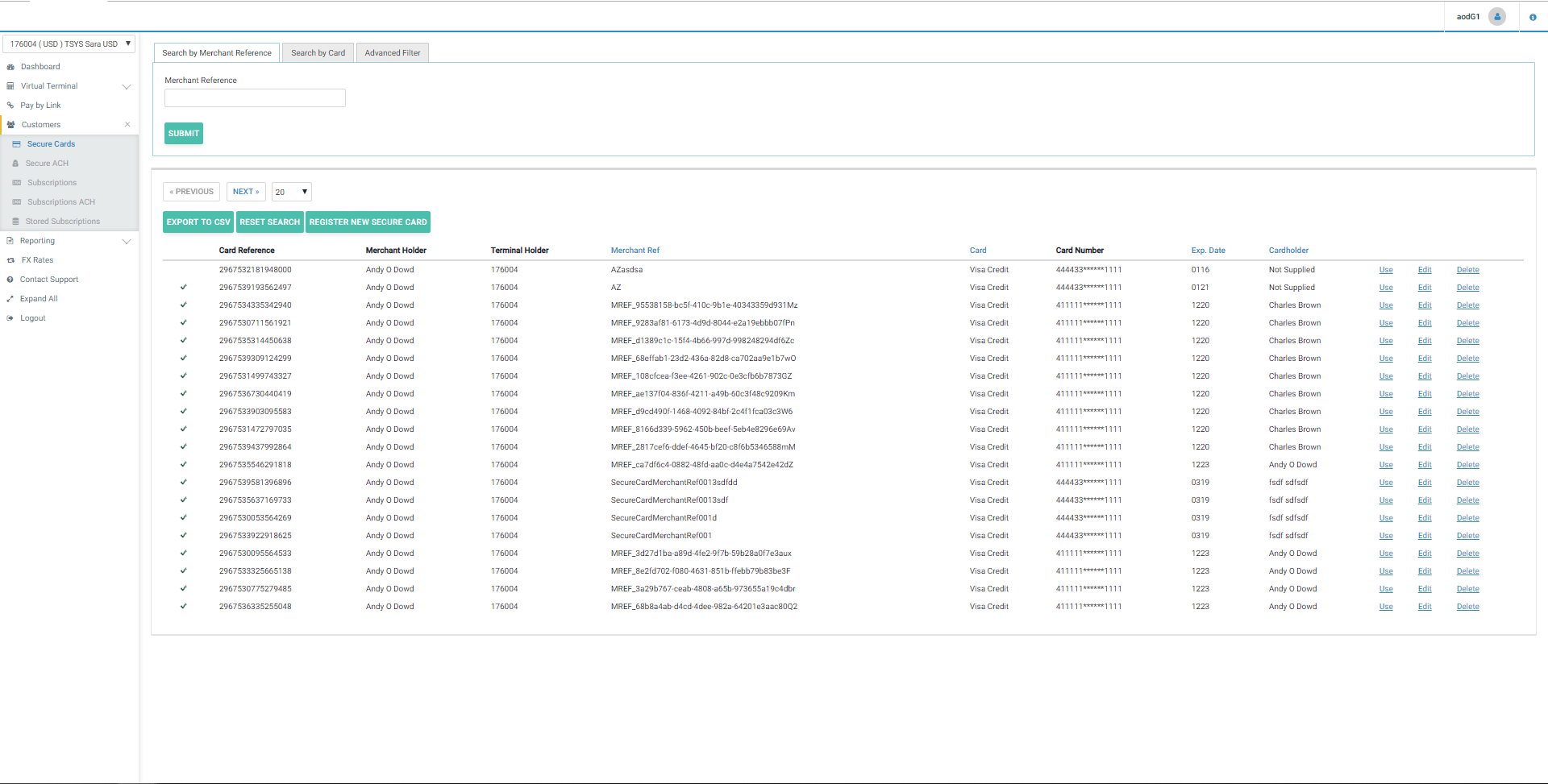
For more information on Secure Cards (Tokens), refer to the Secure Cards (Tokens) section.
Subscriptions
In order to be able to set up a Subscription, it is necessary to set up a Secure Card and a Stored Subscription first. Subscriptions are useful for merchants who are required to perform regular and recurring payments. It allows making those payments automatically on set date at regular intervals for a set period of time, without manual intervention. Manual payments are also possible, if needed.
If you would like to set up a a new subscription, go to “Subscriptions” in the drop down menu. All the previously registered subscriptions are listed in this section, and you can view their details. You can also search for subscriptions by “Merchant reference” or by other criteria.
Before you will be able to create a new subscription, you need to save a subscription template in the Stored Subscriptions section.
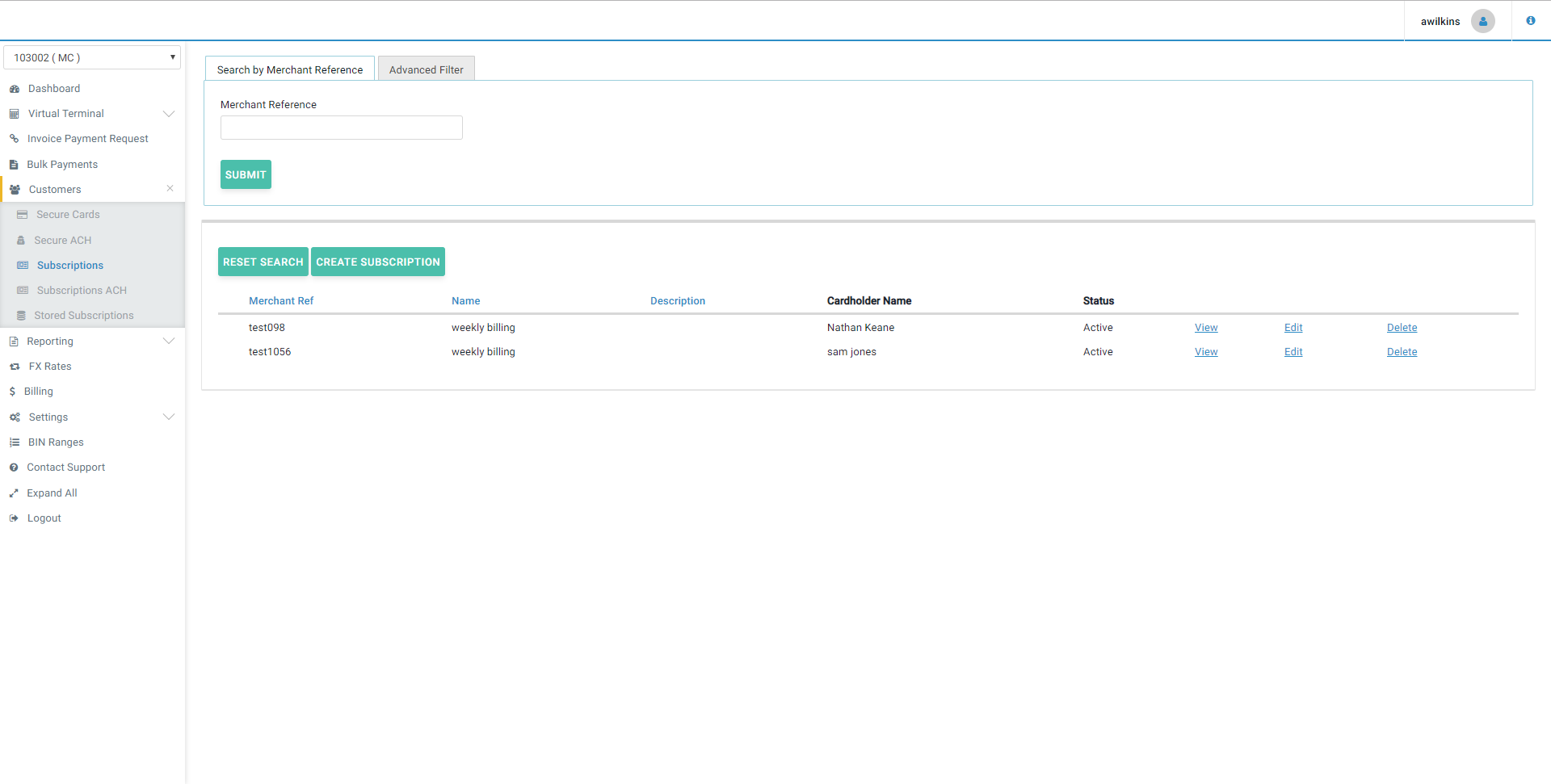
Stored Suscriptions
In order to be able to set up a subscription, it is necessary to set up a Secure Card and a Stored Subscription first. Before you will be able to create a new subscription, you need to save a subscription template in the Stored Subscriptions section.

Reporting
Transaction details can be viewed and managed under the Reporting tab in the SelfCare System.
It consists of “Open Batch” (i.e. unsettled transactions section), “Closed Batch” (i.e. settled transactions) and “Customers” section (i.e Overdue Subscriptions and Expiring Secure Cards (tokens).
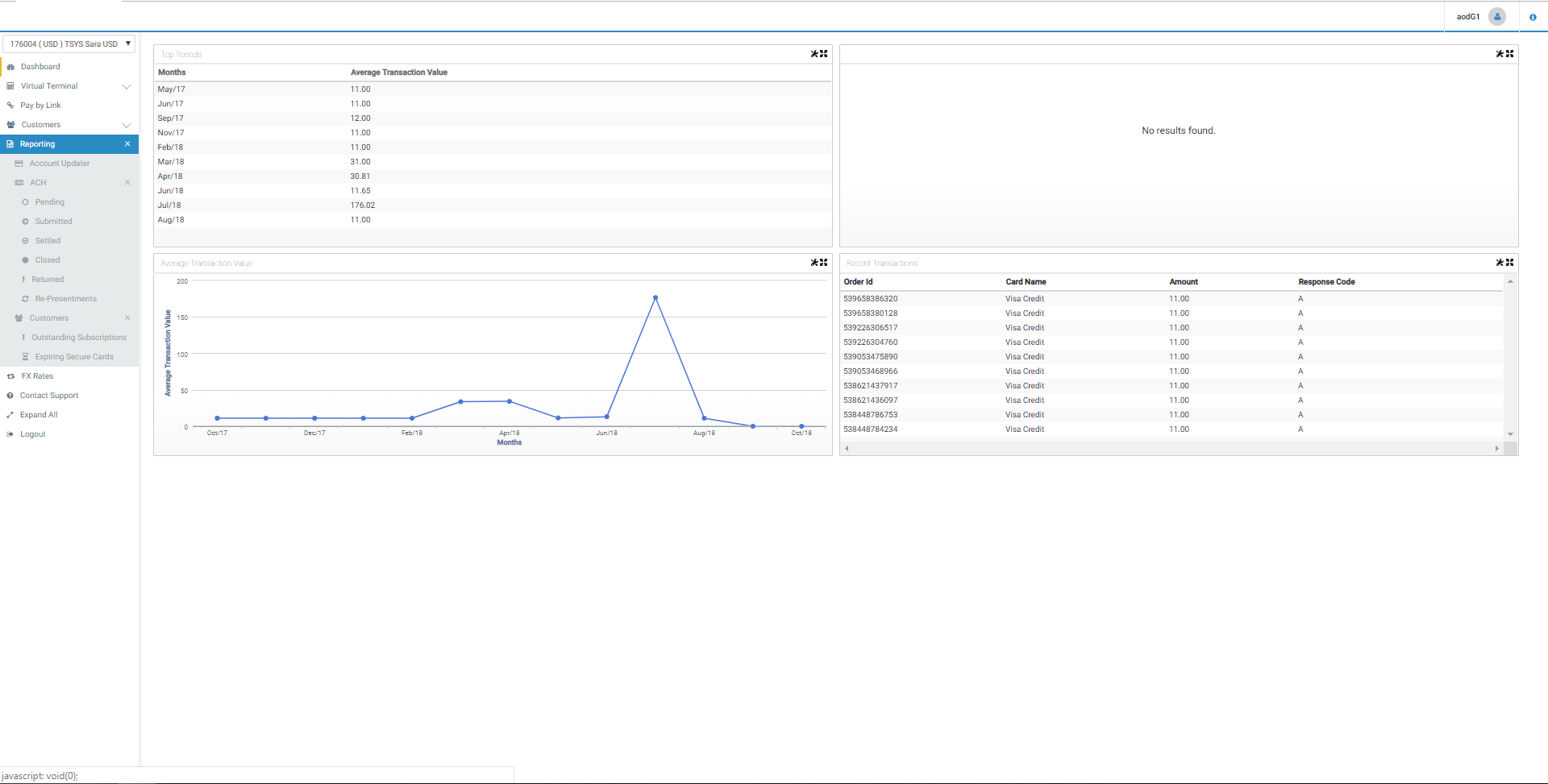
For more information on Reporting, refer to the Reporting section.
Settings
Settings for Hosted Payment Pages, Terminal and API settings (Shared Secret, Receipt URL, Validation URL, etc.), Users, Cards, Custom Fields, etc.
For more information on Settings, refer to the Settings section.
BIN Ranges
BIN is the Bank Identification Number and it is used by online merchants as a way to detect fraud.
By using the first 6 digits of a debit/credit card you can identify the location of the bank that issued the card and the specific name of the bank.
Contact Support
If you have any issues or queries in regards to the SelfCare System, our dedicated Customer Support Team is here to help. Please do not contact us via the "Contact Support" menu in the SelfCare System. Instead, please email us at support@integratedcommerce.io or call us at (866-870-6927) from Monday to Friday between 9am-5pm Eastern Time.
Expand All / Contract All
This option can be found at the end of the left vertical menu, close to the logout option. Use it to expand or collapse all the menu options, making it easier for a user to explore the menu options.